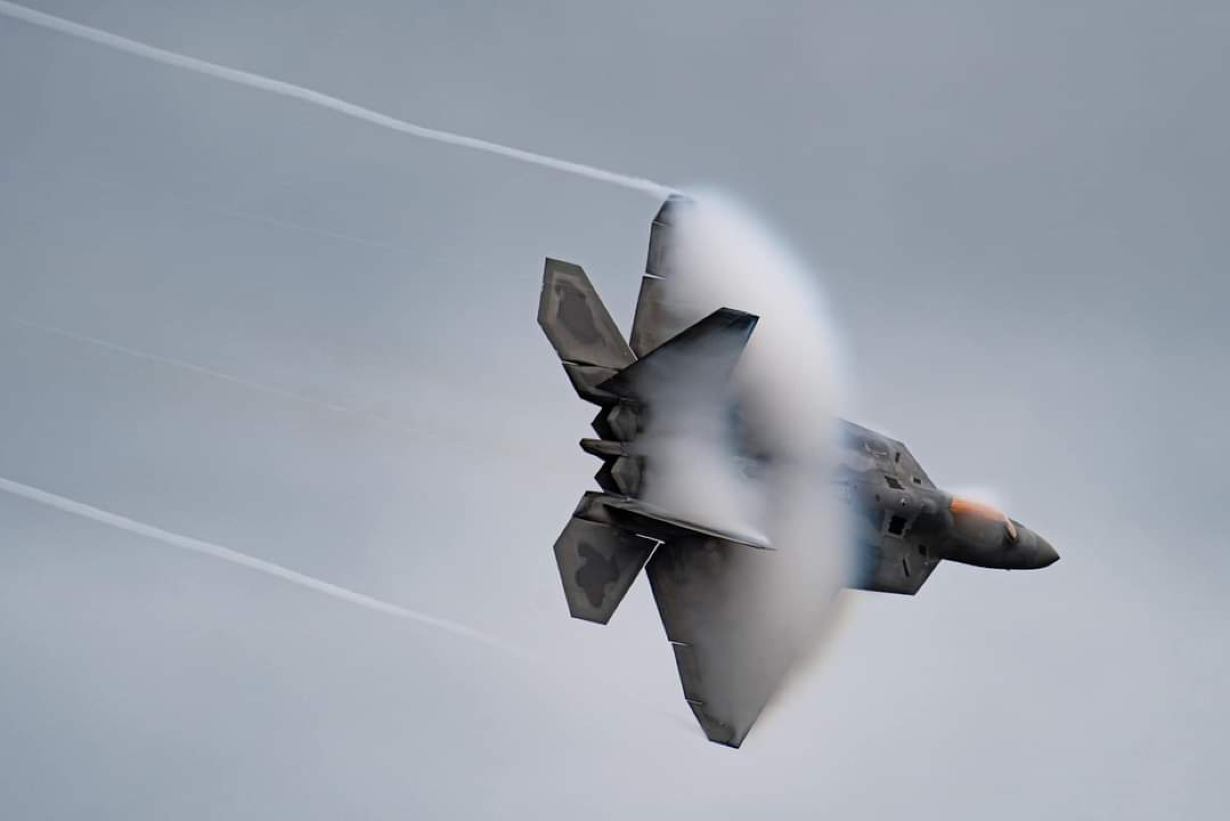According to the Government Accountability Office, the US Air Force will exclude the F-22 Raptor from a communications prototyping project closely linked to its Advanced Battle Management System.
An analysis by the GAO released on January 13 includes information about the F-22’s absence from the so-called ABMS Capability Release 1, which was designed to allow secure data transfer between aircraft and systems on the ground.
GAO investigated the Air Force’s efforts to the Pentagon’s connect-everything drive, also known as Joint All-Domain Command and Control (JADC2), at Congress’s request, which had previously cut funds.
Capability Release 1 was meant to connect and deliver real-time sensor data to KC-46 refueling tankers, F-35s, and F-22s, and separate command-and-control systems. The GAO noted that the F-22 aircraft currently could not exchange information with the F-35 due to incompatible radio systems.
To deal with this issue, the Air Force’s Rapid Capabilities Office initially intended for Capability Release 1 to offer connectivity for F-35s or F-22s to exchange information with command and control sites on the ground, the GAO added.
However, the Air Force officials later said that the decision to exclude the F-22 from preliminary Capability Release 1 work is due to its limited involvement in the future force structure, among other things.
As the EurAsian Times previously reported, the combined Air and Space Forces budget plan for fiscal 2023, totaling $194 billion, asked for the elimination of 150 aircraft, including aging A-10s, KC-135s, and F-22s.

According to the GAO, the Air Force has not yet revised documents to reveal the exclusion of the F-22 and the move to prioritize the F-35. But, officials from the RCO have stated that they may address F-22 connectivity in the future.
In the past, when DOD and the military departments acquired weapons systems, they typically gave more weight to the capabilities of each system than to connectivity, data interoperability, and functional compatibility between systems.
The Department of Defense is now aware that modern fighting conditions are more complicated and necessitate more excellent connectivity for their systems to function, the report noted.
After nearly a year of delays caused by what the report referred to as “technical issues,” Capability Release 1 prototypes are anticipated to be installed on two KC-46 tankers in fiscal 2024.
The technology expands on results achieved during an exercise in December 2019 where the Air Force recorded data flow between F-35s and other aircraft.
Joint All-Domain Command And Control
Capability Release 1 is an essential initiative under Advanced Battle Management System (ABMS), the Air Force’s JADC2 candidate.
Additionally, the Army and Navy have their contenders: Project Convergence, a multi-week tech challenge, and Project Overmatch, a highly classified sophisticated networking project.
JADC2 is a warfighting requirement for keeping up with the volume and complexity of data in modern combat and defeating opponents decisively.
Overall, JADC2 represents how the United States intends to fight future wars, with long-standing barriers between air, land, sea, space, and cyber being eliminated and forces across each domain responding faster and more efficiently than ever.
With the help of JADC2, the Joint Force can instantly “sense,” “make sense,” and “act” on information throughout the battle space. These efforts employ automation, artificial intelligence (AI), predictive analytics, and machine learning to deliver educated solutions via a stable and robust network environment.

According to defense officials, such an approach is required to maintain a competitive advantage over China and Russia, the country’s top two national security concerns.
Meanwhile, the GAO said that the Rapid Capabilities Office also needs to determine the capabilities it plans to deploy this year as part of its cloud-based command and control (CBC2) ABMS program.
Under the CBC2 initiative, the service intends to integrate a range of air defense data sources to enable homeland defense.
The report said that the effort would be based on the Pathfinder software tool prototype for NORAD and NORTHCOM, which gathers and analyzes data from planes and radars, according to the report.
“The RCO intends for CBC2 to replace one legacy command and control system and incorporate data feeds from three other systems,” the report added. The Air Force aims to create a cloud-based command and control network that allows on-demand access to shared computer resources to give this capability.
The service approved the project’s system requirements in February 2022. However, it has not specified the basic operational capabilities needed by the end of fiscal 2023 for CBC2.
That being said, the required capabilities have not yet been specified by the Air Force. As a result, it is still unknown what software developers will be able to produce by the deadline.
- Contact the author at ashishmichel(at)gmail.com
- Follow EurAsian Times on Google News




